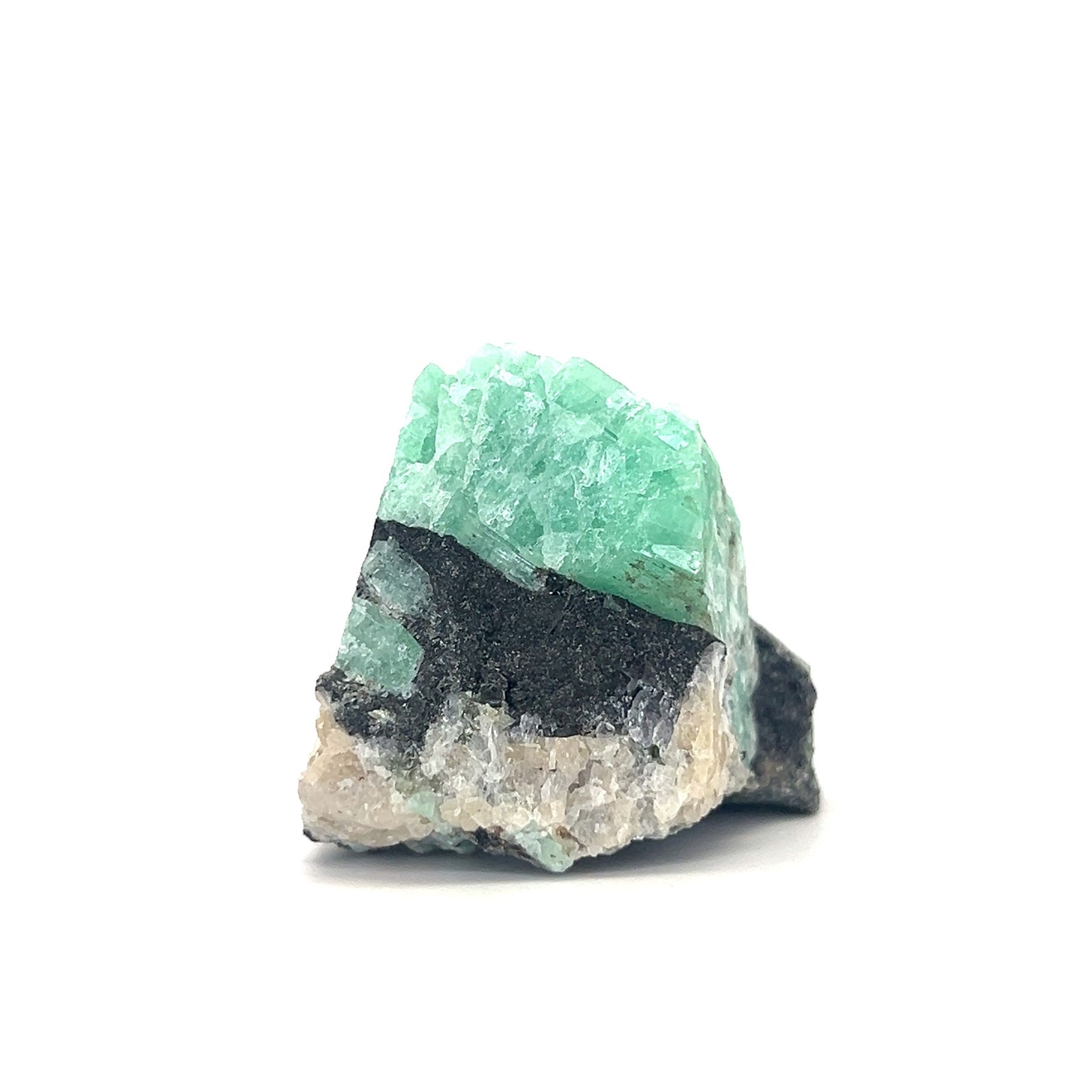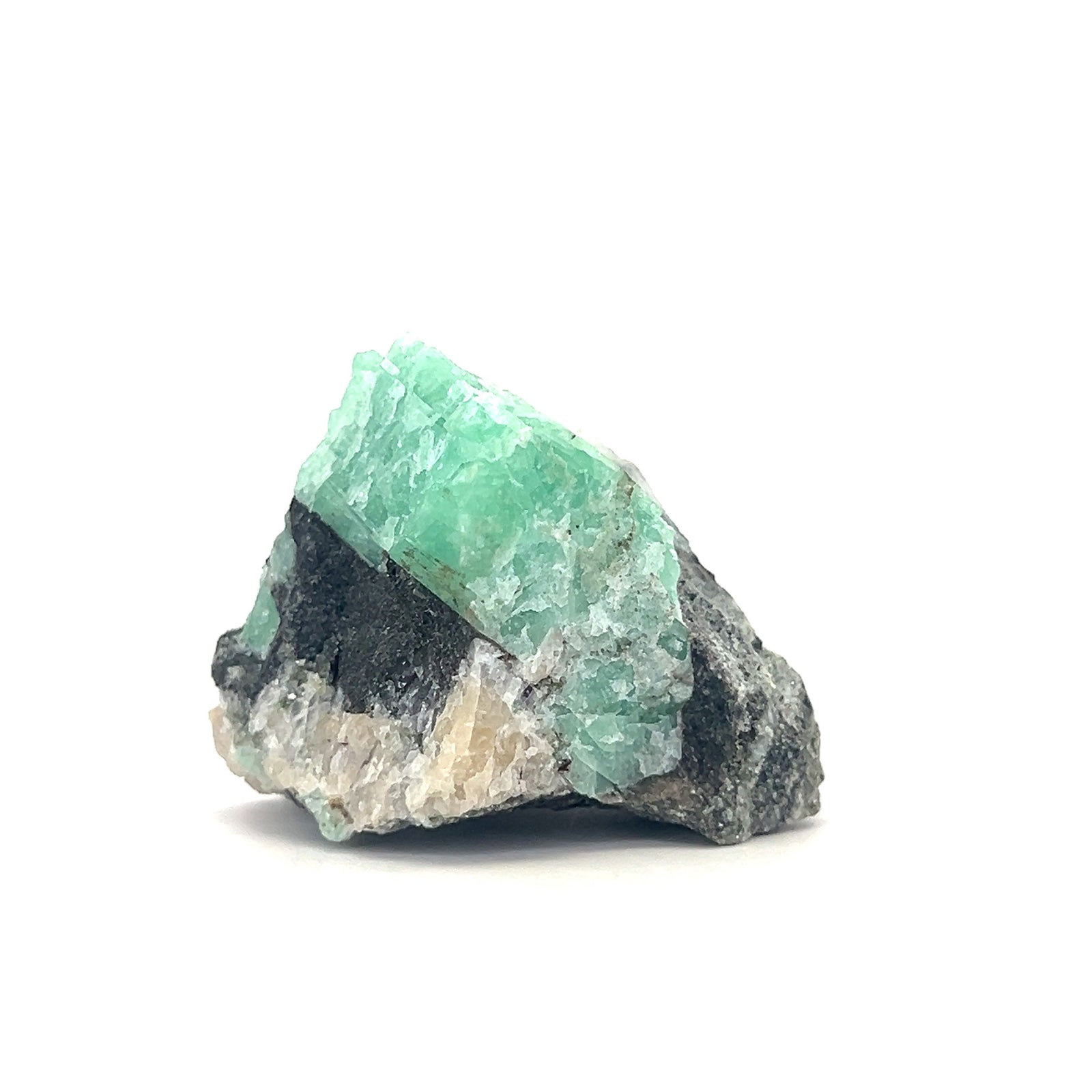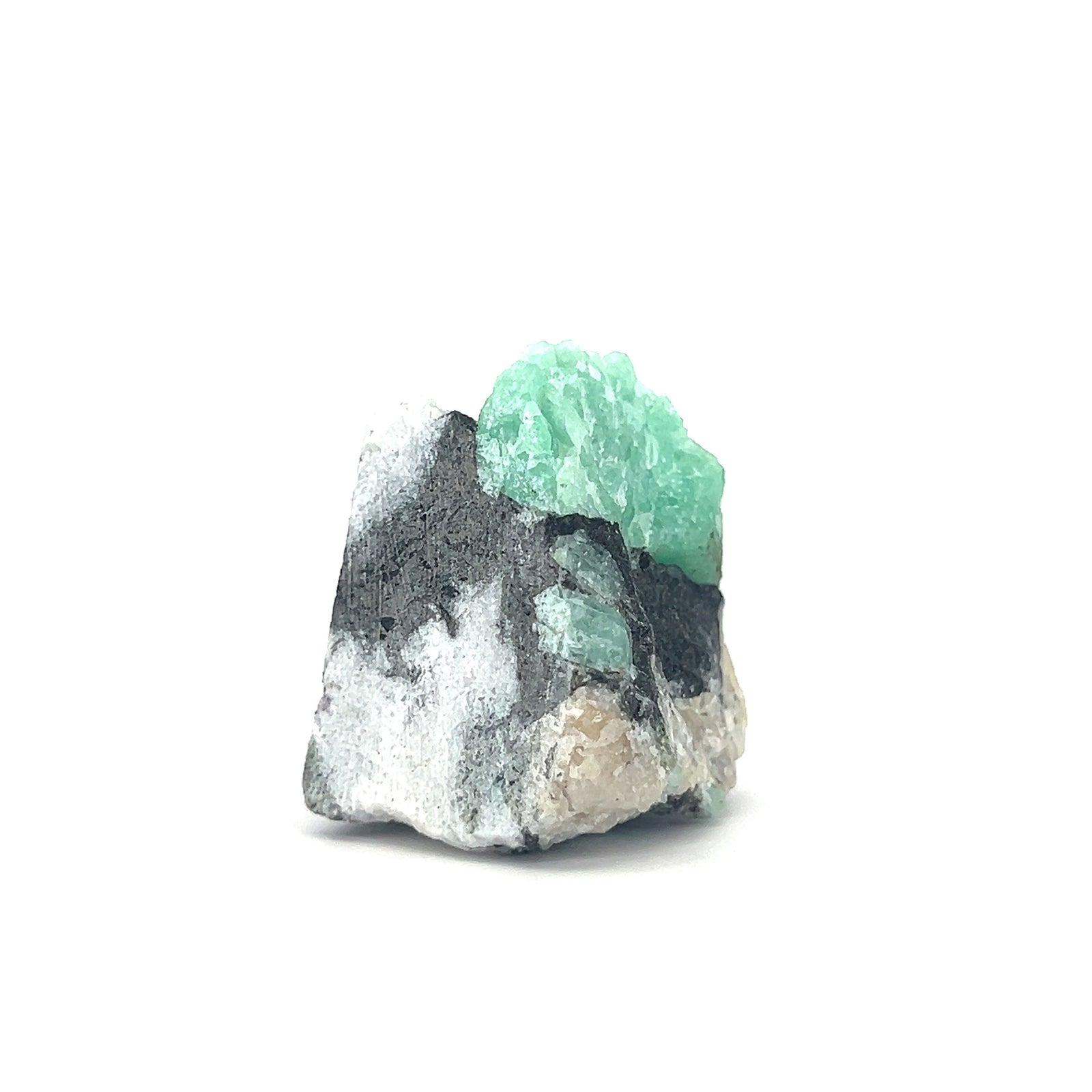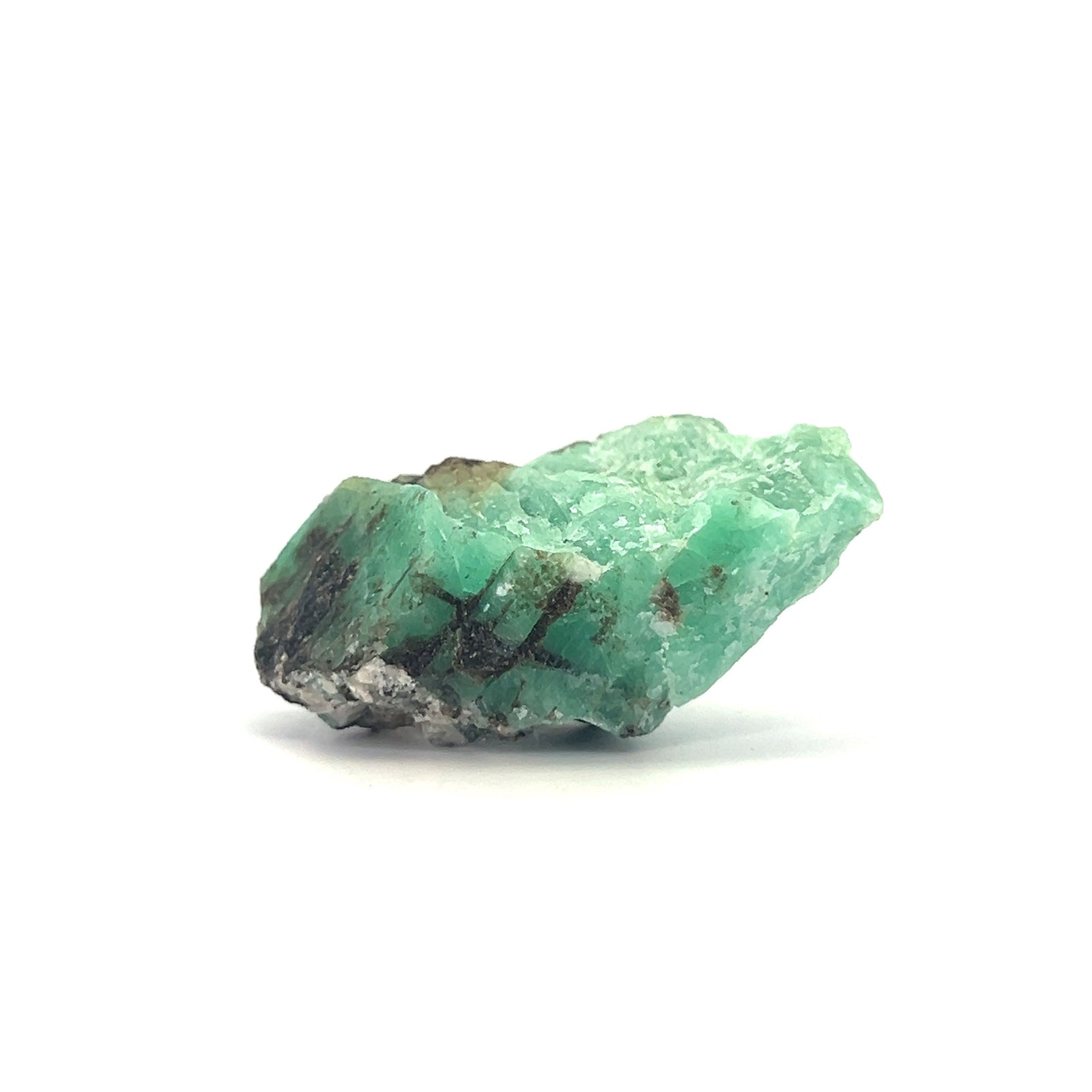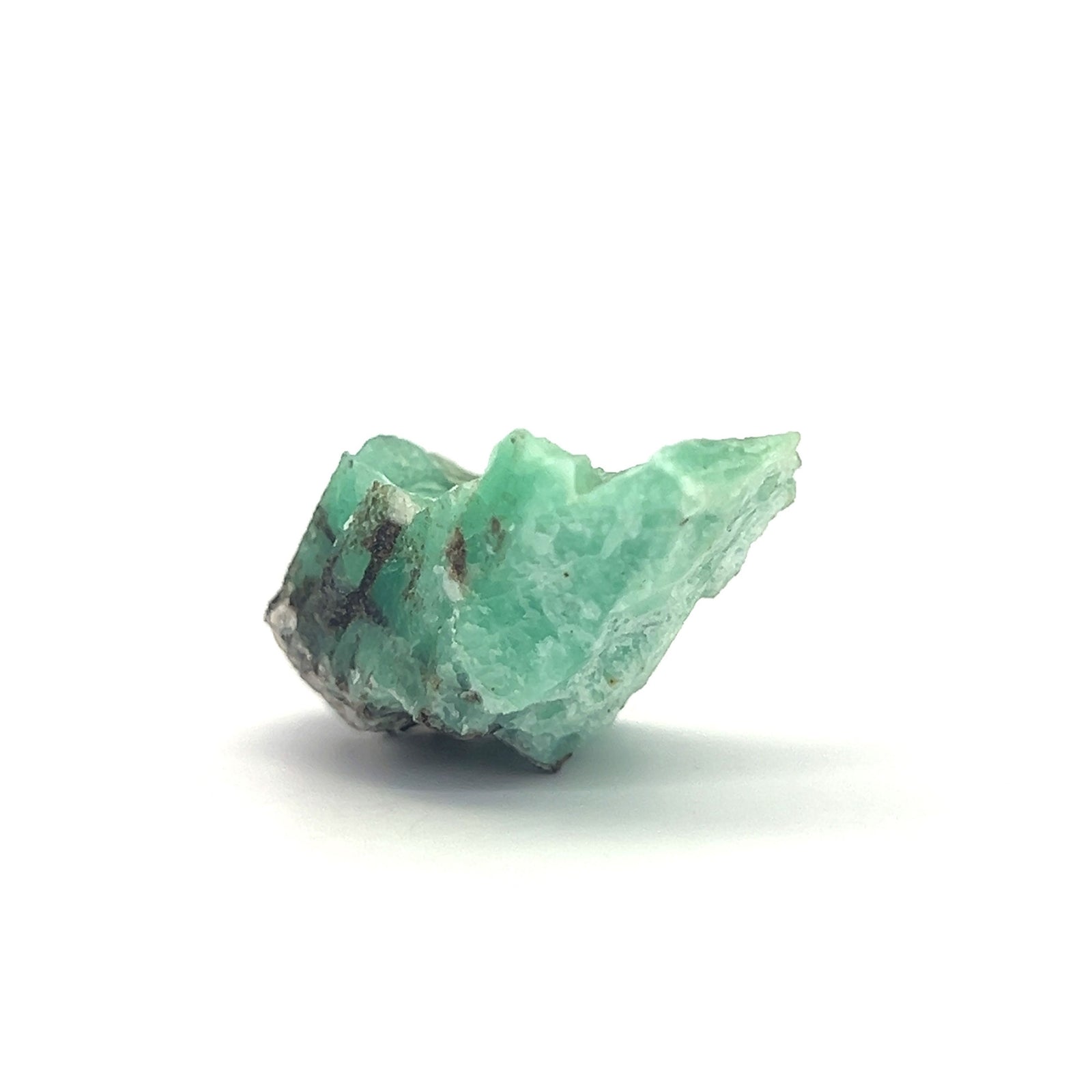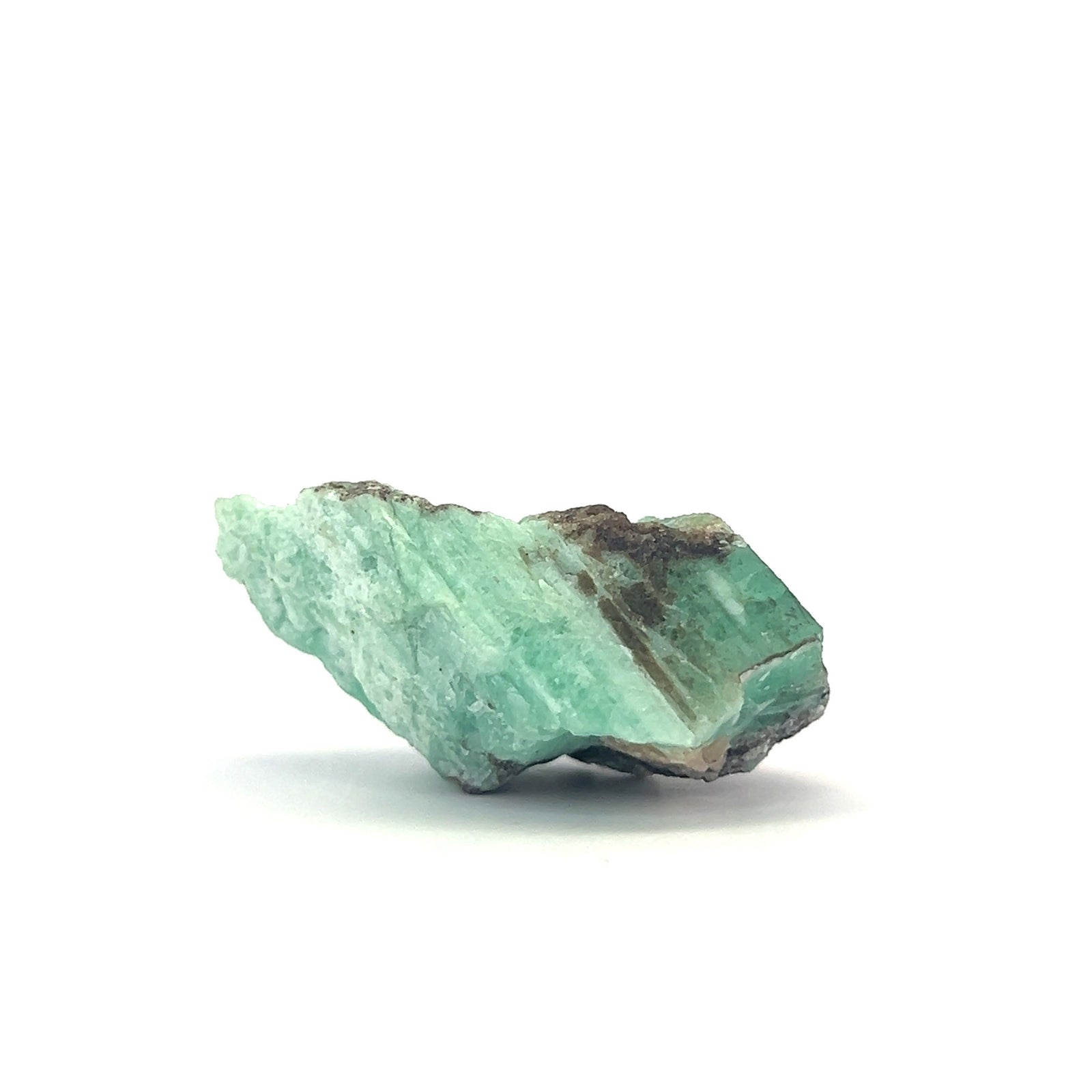An emerald specimen is a naturally occurring piece of the emerald mineral, valued for its unique crystal structure, vibrant color, and often its geological significance.
Emeralds crystallize in the hexagonal crystal system, typically forming prismatic or columnar crystals. The crystal structure is composed of beryllium aluminum cyclosilicate. Inclusions, which are common in emeralds, can include a variety of materials such as other minerals, liquids, or gases. These inclusions often create the "jardin" effect, a French term meaning "garden," which describes the mossy appearance within the stone. This effect adds character to the gemstone and can provide insights into the geological conditions under which the emerald formed.
The color of emeralds ranges from light to deep green, with the most desirable specimens exhibiting a vivid, rich green hue. The green coloration is primarily due to the presence of chromium and, to a lesser extent, vanadium. The intensity and saturation of the green color can vary, with darker and more vivid greens being more highly valued.
Prominent locations of this mineral is: Colombia, Brazil, Zambia, Afghanistan, Russia, China and Pakistan.
MEASUREMENT DETAILS:
MINERAL #1 - 1.25"L x 1"W x 1"H
MINERAL #2 - 1.50"L x 3/4"W x 1/2"H







